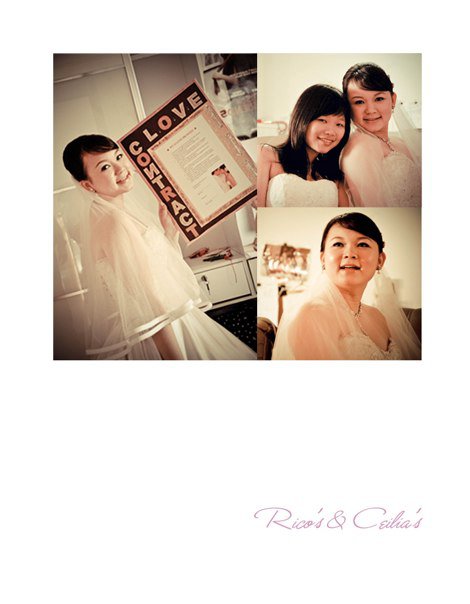Oct 31, 2010 0
Oct 31, 2010 0
Philips Wake-up Light: Wake up the Town
Love the ingenious idea of using Philips lighting to ”wake up” the village of Longyearbyen in the Arctic Circle, where the sun does not shine for four months in winter.
Simply because the people in this town find it hard to wake up in winter, Philips lighting is being put to test by five villagers to see if it helps them in waking up on time and refreshed.
Oct 31, 2010 0
New Social Celebrities
A very good article from Fast Company on how a wave of new faces has hit the shores with social media insurgence:

Justine Ezarik
(aka iJustine) has more than 300 million video views and corporate clients from GE to Intel to Mattel.
Justine Ezarik — known on the web as iJustine — posted a video on YouTube this past spring about her desire to live a healthier life. She asked viewers to share their suggestions of what she might do and more than 11,000 responded. She produced five videos about those ideas that were viewed more than 2.1 million times.
YouTube was happy. The video-sharing website paid Ezarik for allowing it to embed advertising prompts at the bottom of the screen and in an adjacent box. GE was also happy. That’s because Ezarik was doing this at the company’s request, as part of its Healthymagination campaign. Ezarik didn’t hide the fact that GE was involved from her viewers; she’d noted it in her first video, and GE was given a shout-out in each subsequent one. Her viewers didn’t seem to mind. And, yes, Ezarik got paid by GE as well.
The social-media economy is thriving, thanks to people like iJustine, with passionate, committed, and trusting audiences. There has long been debate about what, precisely, defines influence. Dale Carnegie, author of How to Win Friends and Influence People, described it as the ability to arouse enthusiasm in others to change their behavior. Tipping Point author Malcolm Gladwell says it derives from identifying new trends and sharing them through connected networks. Network theory scientist Duncan Watts says targeting influencers is wasted effort, that starting a trend is essentially a random act. The debate has accelerated online with the advent of YouTube, Facebook, Twitter, and other social-media tools. HP Labs did a study earlier this year that defined online influence as the ability to overcome a follower’s desire to remain passive and concluded that Ashton Kutcher has lots of it. But the founder of content aggregator BuzzFeed, Jonah Peretti, demurs: When Kutcher retweets BuzzFeed stories from his @aplusk account, the click-through rate among his 5.8 million followers is less than one-half of 1%.
For businesses, the definition of influence is less important than its impact. (For the record, Kutcher did help raise funds for 90,000 antimalarial bed nets in 2009.) And there is a new, emerging generation of web personalities whose activities are having impact, online and off. We’ve taken a snapshot of this universe, highlighting six categories, including YouTube celebrities such as iJustine; chief social-media officers at major corporations; and specialist bloggers in key industries. Few of these new influentials are household names — yet. Unless your home happens to be one of those that are absolutely devoted to them.

Joe Penna
(aka Mystery Guitar Man) is the sixth-most-watched YouTube partner, with 1.3 million subscribers.
{ YouTube Celebrities }
Fast Company conducted an experiment online this summer called the Influence Project. It was a contest, open to anyone, to demonstrate his or her influence, in part by persuading others to sign up. (For more on the project, see The Influence Project ) The most effective participant by far in this regard was iJustine; she converted 4,800 of her friends and fans into participants — 15% of the eventual 33,000 participants.
When I first speak to the 26-year-old, she is in her Los Angeles apartment, fresh from a trip into the heart of the teen dream. A few days earlier, she attended a Justin Bieber concert in Oakland and is still in awe (and slight discomfort) as she contemplates whether she was the oldest person in the crowd without a child of her own. Her apartment has the cloned feel of many prefab, characterless, beige wall-to-wall units that occupy parts of the L.A. sprawl. What stands out is the rubberized green screen tacked to one wall and the dual-monitor, Mac-powered editing suite in her bedroom that serves as the epicenter of her growing one-person media company.
I’d watched her video post of the Bieber concert, and I mention that I particularly liked the parking-lot footage where she spotlights the vehicles tagged with we love justin and honk if you love jb graffiti. Ezarik, who has a reputation for being the nicest person on the Internet, isn’t sure if I’m being sincere. “I have a very young audience, so if it’s not your type of thing,” she says, “I totally understand.”
With a million subscribers to her YouTube channels and 1.2 million Twitter followers, Ezarik clearly does understand. Her audience — mainly girls aged 13 to 24 — is devoted to her videos. And she is increasingly attracting the eye of corporate sponsors, including Intel, Mattel, and Nikon, that want to tap into that network. “I’ve been educating companies on what they get with online videos, and some are starting to understand the type of clicks and views a lot of us YouTubers get,” she says. “But there is a price to pay. I create, shoot, and edit all my content, so these companies are getting the work of a small studio, all in one, and I have to think that way when I’m monetizing what I do.”
GE quickly learned Ezarik’s appeal. “Justine has tremendous credibility in the space,” says GE global advertising chief Judy Hu. “Healthymagination launched in digital, TV, outdoor, the works. Our YouTube campaign was experimental, and I could not believe the numbers. The views kept going up.” Ezarik was one of six YouTubers that GE tapped, says Hu, “and to this day we have almost 11 million views. It has a life of its own. For GE to be part of that conversation is a new but necessary thing.”
Ezarik is a participant in the YouTube partners program, which offers compensation to video channels that have a large-enough audience (iJustine had some 300 million video views in the past few years) in exchange for ad units inserted at the bottom of videos and in spots on the page. Partners get paid based on the number of views, plus a bonus for high click-throughs. “Twitter and Facebook are great tools,” says Kevin Yen, YouTube’s director of strategic partnerships. “But YouTube is the one that pays out the money.” The biggest players make additional side deals with sponsors, who might want specific mention of their products in the videos. Ezarik, for instance, posted a video that she shot inside Mattel’s offices, at the toy company’s request. It attracted more than a million views.
In 2007, Ezarik was working as a video editor for a chiropractor when she posted a short clip on YouTube of the 300-page bill she received for her first-generation iPhone. The post went viral (AT&T subsequently started providing usage summaries), and Ezarik quit her job to become a full-time YouTuber. She’s quick to point out a misconception about her work. “People are like, ‘Look at all these viral videos you have.’ And I’m like, No, it’s not viral, that’s just me building an audience for the past five years of my Internet life.”
Ezarik is one of a cohort of rising YouTube celebrities — others include Philip DeFranco, Shane Dawson, and Charles Trippy. Not far from iJustine’s place, Joe Penna is in his West Hollywood apartment wearing a pair of boxers and one of his signature graphic T-shirts, eating lasagna and drinking a Gatorade. It’s 2:30 p.m. on a Friday afternoon, and the 23-year-old filmmaker is winding down after finishing his quota of two videos a week. Under the name Mystery Guitar Man, Penna is the sixth-most-watched YouTube partner, with 1.3 million subscribers. His specialty is playful, effects-filled music videos, and he exudes a laid-back vibe as we discuss how in six months he’s gone from sleeping on the floor of his apartment and stealing his neighbors’ Wi-Fi to buying a house.
“It was during a conversation with this guy I work with named Billy Reid that I realized I even had influence,” Penna says. “He told me that when I didn’t mention his name and the song he wrote in one video, it sold only 600 copies on iTunes. When I did mention it in another, it sold 6,000. It was like, Whoa, these people are actually listening to me.”
Penna’s first YouTube hit was a stop-motion video called “Guitar: Impossible” that has been viewed more than 9 million times. “After that, I gave myself six months, moved to L.A., and tried to see if I could do this on my own.” I ask whether there’s any truth to a recent web story that top YouTube partners can make as much as $180,000 a year. He laughs, “It’s accurate if it said that’s what they pay in taxes. I don’t want to get into specifics, but there are some YouTubers making in the mid-to-high six figures.” (YouTube’s Yen confirms that there are hundreds of partners making six figures a year.)
Like Ezarik, Penna is also working with companies that want to reach his subscribers, including Coca-Cola, HP, Kellogg’s, and McDonald’s. “I just made a video for Garnier hair gel” — an obvious tie-in given Penna’s spiked locks — “and they were pretty loose with the creative.” In the piece, Penna rides through the desert in a vintage convertible Cadillac and turns the car — signal indicator, electric windows, keys — into a one-man-band apparatus. With his hair au naturel, everything is just out of sync. After applying some gel, Penna finds his rhythm. In its first two weeks, the video had 1.3 million views. Kat Peeler, SVP of marketing at Garnier Fructis, is thrilled: “Joe is the ultimate representation of our brand.”
“Companies approach me all the time,” Penna says. “I recently had someone offer me $1,000 to do a video. I had to explain that my fee is 50 or 60 times that.” Sometimes he backs into a corporate partnership: Last winter, he directed a stop-motion video called “T-Shirt War!” for the YouTube comedy duo RhettandLink. In the piece, the self-described “Internetainers” wear T-shirts whose graphics battle each other — a fan blows over a stack of Jenga blocks, a dart pops a balloon. An ad agency saw the video and asked the crew to re-create a custom version in which a McDonald’s T-shirt duels a Coke T-shirt. Penna agreed, put the video up on YouTube (where it has gotten 1.4 million views), and Coca-Cola and McDonald’s also promoted the video, as an ad on television and in movie theaters.
But Penna says he won’t do just anything for money — he recently rejected a lucrative offer from a beer company: “If I can’t organically integrate the product into my video in a way that makes sense, I have to turn it down. My audience trusts me in a way that they’ll never trust some brand, and I can’t jeopardize that.”

Jill Fletcher
of Virgin America tapped power users on Twitter to promote the airline’s first international route.
{ Chief Social Officers }
Scott Monty was sitting on his living-room couch in his home near Detroit last April, watching American Idol. As Ford’s head of social media, he was also monitoring the company’s Twitter stream on his laptop, and shortly into the program, he saw the following tweet: “Hey @ford, why are you sponsoring American Idol when you took bailout money?”
It’s a situation every business dreads. A lone critic unleashes a flaming tweet with the intention of starting a wildfire. Monty could imagine the collective thinking drifting toward, “Yeah, Ford, why are you spending our taxpayer money on a TV show?”
Monty quickly doused the spark: “I just popped a quick tweet to the guy: Hey, we’ve been committed to American Idol since season one, and by the way, we didn’t take bailout money.”
Many corporate marketers are enraptured by the potential of social media; just as many are terrified about what might happen if a cycle of criticism spins out of control online. Oftentimes, marketers hold both beliefs simultaneously.
In the vanguard of grappling with this dilemma are a handful of social-media experts and advisers inside major companies. (We call them “chief social officers,” though almost none have that title.) By virtue of their frontline position, many eyes are upon them, in the virtual world and the brick-and-mortar corporate establishment.
Ford’s Monty is one of those leading the charge. When he arrived at Ford from the marketing agency Crayon two years ago, he believed that the carmaker had to extend its communications reach beyond the usual suspects of the automotive press. “Every industry has a bubble,” he says. “There’s the social-media bubble, the automotive bubble, the tech bubble. People tend to congregate in communities that feel the most comfortable. We wanted to break out of this bubble mentality.”
So when Monty began setting up launch events for Ford’s new vehicles, he began inviting not just auto writers and auto bloggers but bloggers from the tech world, the green world, parenting and lifestyle blogs — all in a quest to spark discussions beyond the gearhead crowd. “We were bringing people into the fold who were not familiar with Ford and who could then influence other people.”
Ford created a social-media-themed campaign for the company’s Fusion hybrid vehicle in the fall of last year that included YouTube videos of customers’ own experiences with their cars. It was an unusually hands-off approach for a major marketer that historically cherishes control over its product image. Last January, when the company introduced its new Fiesta, Monty’s team identified 100 online figures to whom it gave a car for six months. There were no restrictions or rules on what the recipients might say about the vehicle.
“You could imagine some high-level executives raising their eyebrows when that was first proposed,” Monty says. “But everything we do in social media is colored by our vision of humanizing Ford. We wanted people proficient in shooting and uploading onto the web, and they had to be socially vibrant and have communities on the major platforms. Because the campaign was taking place across the country, they also had to be geographically dispersed.”
One person Ford turned to was Digg founder Kevin Rose. “We really liked that the audio system had a Bluetooth sync, that it got 40 mpg, and it cost, like, $16,000,” says Rose. “Ford would have liked for us to say other things, but they let us wing it.” According to Monty, the Fiesta campaign generated a 58% awareness rating among Fiesta’s target under-30 demographic — higher than some Ford models that have been on the road for years — and a 14% reservation-to-purchase rate, compared to the company’s usual 1% to 2% rate.
Jill Fletcher of Virgin America airline is also pushing social-media campaigns from inside a company. When Richard Branson launched the airline in 2007, Fletcher says, it was a natural decision to reach out to the tech community, since the airline was the only one based in the San Francisco Bay Area. Virgin America enlisted seven leading Internet players — including Boing Boing’s Xeni Jardin and Mark Frauenfelder, and Engadget’s Peter Rojas — as voluntary advocates for the new airline. “From the beginning, we’ve had a network of online influencers who are very supportive of our brand and constantly fly Virgin and tweet about us,” says Fletcher.
Last June, Virgin America teamed up with the social analytics company Klout to promote its first international route to Toronto. Klout sifted through Twitter users — weighing criteria such as how often updates were shared — and identified 120 power users to whom Virgin America offered a free flight. The campaign generated more than 5,000 tweets and 90 blog posts. Media such as the Los Angeles Times, which hadn’t gotten free tickets, also wrote about the campaign. “We saw the program as a way to extend our reach and connect with people outside our existing networks,” says Fletcher. “The way we see it, the social-media aspect around the brand is going to happen whether Virgin America has a voice in it or not. We definitely want to be an active part of the conversation.”

Gary Vaynerchuk’s
Wine Library TV has 150,000 loyal viewers. He also advises companies such as Campbell’s Soup and the New York Jets.
{ Gurus }
Gary Vaynerchuk is sitting at a small desk in an unadorned, windowless office at his Manhattan headquarters in Tribeca and explaining why, in his words, “I was built for the age of social media.” An optimist who always sees his glass as totally full, Vaynerchuk says, “There are not a lot of people who look like me: I’m the businessman and the entertainer.”
Vaynerchuk made a name for himself by transforming his father’s $4 million a year New Jersey wineshop into a $50 million online business. He did it via a video blog called Wine Library TV, which over four years has built a loyal audience of 150,000 viewers per episode. His showmanship has earned him appearances on traditional TV (on Late Night, he persuaded Conan to eat dirt, gnaw on a cigar, and suck his own socks as a means for palate development) and, along with his enthusiastic support of more affordable varietals, elevated him up the ranks of publicly recognized U.S. wine experts.
Vaynerchuk has also channeled his success with Wine Library TV into a social-media consultancy called VaynerMedia, as well as a best-selling management book called Crush It! In so doing, he has become an adviser to businesses ranging from Campbell’s Soup to PepsiCo to the New York Jets — which, at Vaynerchuk’s prodding, became the first team in the NFL to launch virtual goods and have its own apps. “We were the first team to tweet out our draft picks,” adds Jets EVP of operations Matthew Higgins. “Gary lit the way.”
Vaynerchuk is emblematic of a growing number of coaches and consultants for hire in social media, figures such as Jay Baer (whose Convince & Convert firm has done work for the likes of Nike and Sony) and marketing blogger Brian Solis (whose latest book, Engage, advises businesses on how they should measure success on the web). They are part of an ecosystem that has developed around the growing number of companies that want to learn how to take their brands social.
“In the beginning, people would say my ‘hyper wine act’ is all a flash in the pan and murmur, ‘Let’s see where that Gary V. is in 2008; they’ll get tired of his act,’ ” Vaynerchuk recalls. “And I would sit there like an evil scientist and think, You have no idea.” The day we meet, he had earlier appeared on CNBC to talk about marketers relinquishing control when using social media; he also made a video about the appearance for his website. He’s about to head to Rockefeller Center for the premiere of his new Sirius XM radio show called Wine & Web — a combination of his two passions that exemplifies how his initial business (wine) and his tech consulting have become mutually reinforcing.
The proto social-media guru is Guy Kawasaki, onetime chief evangelist at Apple, now a partner in a VC firm, an author of 10 books (including the best-selling The Art of the Start), and an adviser to companies including Cisco and Audi. He has more than 42,000 Facebook fans and 280,000 Twitter followers, and he runs news-aggregator site Alltop. “The nobodies are the new somebodies,” says Kawasaki, referring to emerging social-media influencers. “The old theory is that you had to go suck up to Walt Mossberg [of The Wall Street Journal] or Michael Arrington [of TechCrunch] to get a message out — the A-listers. That is completely turned around right now. It is more likely that lonelyboy15 is going to tell hillary75 that this is a hot site, and hillary75 will text that to her other 15-year-old buddies. Some sites will take off and then the former A-listers have to write about it because otherwise they feel clueless. Talk about power to the people!”

Christopher Poole
(aka moot) founded 4chan, an online community of anarchists, pranksters, and rogues.
{ Cabals and Compatriots }
Last July, a story about the death of AT&T CEO Randall Stephenson appeared on CNN’s iReport citizen journalism channel. The account stated that paramedics had found Stephenson “delirious” on the shore outside his 20-bedroom beachfront mansion, that 911 was called when a friend grew concerned after a night of “male dancers everywhere and the best blow west of the Mississippi,” and that the CEO reportedly died after falling into a coma during transit, “a suspected side effect of massive cocaine use.”
Turns out the AT&T chief is alive and well. The iReport post — quickly taken down by CNN — was a hoax. But it was a hoax with a purpose: The phone giant had blocked broadband access to the controversial image-board site 4chan, a haven for anonymous users to explore any and all topics — from Japanese animation to racist humor to porn — and a springboard for the popularization of Internet memes such as Rickrolling and LOLCats. The iReport item was a retaliation by 4chan users, known as the Internet’s largest collective of anarchists, pranksters, and rogues. Many of them interpreted AT&T’s action as censorship.
AT&T’s response to the fictitious CNN post: It restored service and issued a statement explaining that it had blocked access to 4chan as a precaution, after a customer had experienced a denial-of-service attack from a 4chan address. “This action was in no way related to the content at img.4chan.org,” stated AT&T, trying to calm the situation.
Christopher Poole, 4chan’s 22-year-old founder (who is known online by the pseudonym “moot”), posted this, regarding AT&T: “This wasn’t a sinister act of censorship but rather a bit of a mistake and a poorly executed, disproportionate response on AT&T’s part. Whoever pulled the trigger on blackholing the site probably didn’t anticipate (nor intend) the consequences of doing so.”
The 4chan story is, at its core, about the power of linked individuals who, when acting together, can roar. “It’s not uncommon for underground Internet communities to exercise their influence,” says Poole. “People see 4chan as a leader — with 11 million users, it is a large online community — and most forums are influential in their own space.”
Fast Company felt the sting of this phenomenon ourselves, at the initial stages of our Influence Project. Social-media consultant Amber Naslund was among a coterie of critics who objected to our methodology. Colleagues sympathetic to her position, including then SF Weekly writer Alexia Tsotsis and blogger Danny Sullivan of Search Engine Land, quoted her comments and added their own. While none of these players had massive followings as individuals, collectively they created a network effect that amplified their criticism.
A linked group of users can also create a positive feedback loop. Passionate online fans famously helped revive TV’s Family Guy after it was initially canceled by Fox, while Arrested Development may get a second life as a movie because of Internet fan support. Earlier this year, one ardent fan of Betty White, David Mathews of San Antonio, launched a campaign on Facebook to get the octogenarian actress invited to host Saturday Night Live. Hundreds of thousands of people joined in with their support. “I didn’t know what Facebook was,” White said during her monologue on May 8. “Now that I do know what it is, I have to say, it seems like a huge waste of time.”
{ Specialists }
Just as businesses have historically paid heed to industry trade publications and newsletters, so too must they now familiarize themselves with the bloggers that intersect their industry. Nikki Finke’s deadline.com inspires fear and respect from the Hollywood set. Tina Roth Eisenberg’s blog Swissmiss has a committed following in the design community. A kind word from Kotaku can mean millions in sales to video-game publishers. Daddytypes.com blogger Greg Allen presents the dynamics of modern fatherhood, from Duallie strollers to supercharged Mercedes wagons, to 50,000 fans and followers.
Tech-industry players such as Brian Lam of gadget site Gizmodo are particularly powerful. It isn’t just because of the size of his audience (9.6 million unique visitors a month) but how the conversation on Gizmodo can impact offline behavior. Lam’s aggressive iPhone 4 coverage last summer, for instance, created the flash point that pushed Apple CEO Steve Jobs to deal with a critical flaw in the device’s antenna. After Gizmodo’s repeated posts, Consumer Reports retracted initially positive statements about the iPhone 4 and eventually concluded it couldn’t recommend it. Apple had no choice but to stage a somewhat bizarre explanatory gathering.
Perhaps the most influential specialists are the sites and bloggers that cover social media itself. Often described as the Brad Pitt of social media, 25-year-old Pete Cashmore is the founder and CEO of the website Mashable. That position led to the Scotsman’s being declared the world’s most influential person on Twitter in a 2009 poll. As a blogger and editor, Cashmore has an intuitive understanding for online storytelling that not only attracts more than 30 million monthly page views for Mashable but has also made the site profitable. What he believes sets Mashable apart from traditional news outlets: “Social media is about engagement and interaction,” he says. “It’s more about community and posing the question, rather than having all the answers.”

Jonah Peretti
who helped cofound the Huffington Post, has built BuzzFeed into a network of 150 million users.
{ Filters }
Linguist Noam Chomsky once remarked that information is entropy. Never has that been truer than on today’s Internet. There is so much information — and conflicting points of view — on the web that curators who spotlight what’s important have a particularly strong impact. Rose, the Digg founder, created a system where the most-read content is pushed to the top of the Internet news cycle. Kawasaki’s Alltop is what he calls an “online magazine rack” of selected topics on the web. Jack Dorsey’s Twitter platform allows users to communicate in both a one-to-one fashion and one-to-many. In the process, Twitter creates a world of everyday curators.
Jonah Peretti is a curator extraordinaire. He helped cofound the Huffington Post — notably, building the functionality that integrates content from around the web — before launching BuzzFeed in 2008. The MIT Media Lab grad has built the site to 7 million unique visitors a month, with a total network of 150 million users today.
“We measure what consumers actually like, and when we send a thousand people to a piece of content, it reaches 3,000 because every one person is on average sharing with two other people,” says Peretti from BuzzFeed’s SoHo loft headquarters. “We test things with real people to see what they are sharing. It’s just real-time analytics, looking at how people are engaging with content and then sending people to the stuff that inspires more action and more sharing.”
Peretti gets paid by companies like GE, Comedy Central, Absolut Vodka, and IFC to assess the impact of their marketing campaigns using real-time data from BuzzFeed’s audience. “There are lots of advertisers creating content that they want to be viral. And we can help them push it out to a diverse audience of people who like to share stuff. Then we see how they react to it and evolve the content.”
A recent study by the advertising firm Hill Holliday reported that BuzzFeed users shared at a higher rate than Facebook, Twitter, or the Huffington Post. “The shorthand way of looking at influence is that this person has had a lot of success and done things before and has a track record and that’s sort of cool,” Peretti muses. “The person isn’t a superhero, but they’re opportunistic and analytical and can use data to sense which networks are ready to make something spread.”
As I get in the elevator, Peretti delivers one last thought: “Just remember, influence is one of those words where everyone thinks they know what it means, but has a different definition in their head. And that’s okay. Because whenever commerce and money is involved, there are lots of incentives to pick a convenient definition for the word depending on what it is you are able to deliver. For me, I’m happy to use whatever definition is helpful to communicate that our audience is really engaged.”
[Photo Credits: Jeff Minton (Justine Ezarik), Nancy Pastor (Joe Penna), Dustin Aksland (Jill Fletcher), Justin Fantl (Christopher Poole), and Rennio Maifredi (Gary Vaynerchuk, Jonah Peretti).]
Oct 31, 2010 0
A Social CSR Campaign – P&G

Bloggers can embed this widget and any user that clicks on the widget will donate one day of clean drinking water and receive a coupon from P&G.
“P&G has set up the widget as a sort of fundraising competition to see how many clicks individual bloggers can accumulate. It’s an interesting spin on social good that focuses on cultivating a community rather than coercing friends (or strangers) to pay up.
Because P&G is responsible for the actual “donations,” bloggers can spend their time writing and producing great stories instead of sending out e-mails to ask for donations, which makes the contest more about helping the cause than promoting oneself.”
Via Mashable
Oct 31, 2010 1
Applying Econs in Social Media
“Economist turned advertising executive Jason Harper sees an additional function: as a real-time laboratory for measuring how multimillion-dollar ad campaigns are succeeding or failing to drive product sales.”
“To gauge the predictive power of tweets and Facebook sign-ups, Harper borrowed the concepts of velocity and acceleration from the world of physics.”
“”Under Harper’s model, which he calls Velocity and Acceleration, the idea is to constantly measure the number of related tweets, blog mentions, and Facebook fan sign-ups during the campaign. By using calculus to compute the velocity, or rate of change, of the tweets and sign-ups, Harper can easily calculate any acceleration–the rate of change of velocity over time. Using these two metrics, Harper says, he can predict whether a mass marketing campaign will reach its overall goals within the first few days it begins running. The resulting curve typically takes a steep upward slope before leveling off, a pattern known in the industry as “the kick-ass curve.” Says Harper: “The idea is to predict the height of the plateau.”
From TechnologyReview
Oct 31, 2010 0
Facts about Social Gaming
Oct 8, 2010 0
Turn your data into visuals!
A joint collaboration between Google & IBM Research.
“Visuals are cognitively efficient” and they are critical in the new journalism arena.
Journalism in the Age of Data from Geoff McGhee on Vimeo.
Try it here.


















